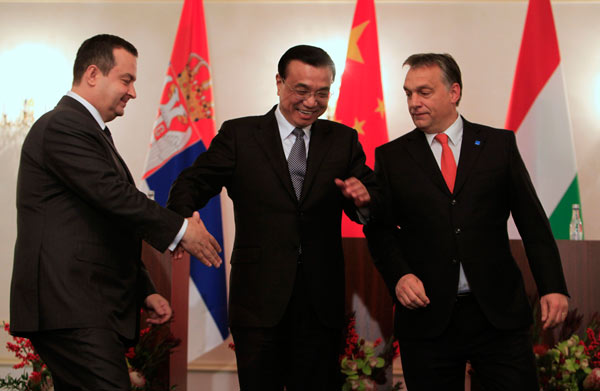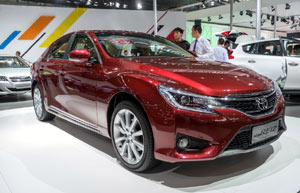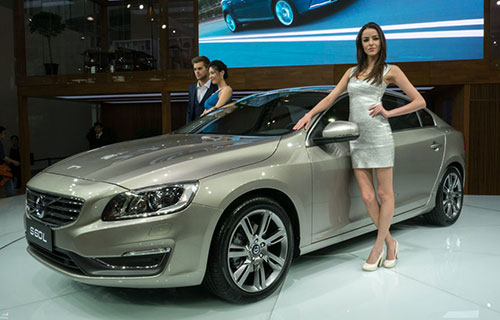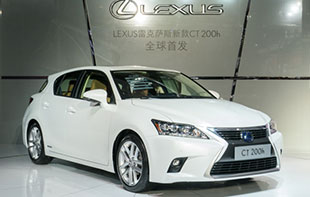

|
 |
|
Premier Li Keqiang (center) shares a light moment with Serbian Prime Minister Ivica Dacic (left) and his Hungarian counterpart Viktor Orban after a joint news conference in Bucharest on Monday. Radu Sigheti / Reuters |
After talks with government leaders from Central and Eastern European countries at the Romanian Parliament Palace on Tuesday, Premier Li Keqiang invited them to see a special exhibition featuring Chinese equipment involved in high-speed railway and infrastructure construction.
In a room of more than 200 square meters in the palace, a large LED panel was set into a wall. The eye-catching exhibits included two train models —one of a high-speed railway and one of an ordinary railway — placed in the center of the room.
Leaders from the European countries watched a video in English about the development of high-speed railways in China, then read further details on display panels.
Li pointed out items of interest in the model to the leaders around him.
He said the exhibition is to let the governments and business people in Central and Eastern European countries know more about the development of Chinese infrastructure and encourage businesses from both sides to invest in fields where they can complement each other.
On Monday, Li and his Romanian counterpart Victor Ponta witnessed the signing of a series of contracts, including for nuclear reactors, power plant projects and high-speed railway construction.
With Hungarian Prime Minister Viktor Orban and Serbian Prime Minister Ivica Dacic, Li also announced on Monday that the three countries will build a railway connecting Hungary's capital city Budapest and Serbia's capital city Belgrade.
Li said at the news conference that the project has great meaning for infrastructure cooperation between China and the European countries. He highlighted the large potential in China's cooperation with the region in infrastructure, electricity and construction projects, especially the high-speed railway system.
"China's construction of high-speed railways is at a high level with advanced equipment and mature technology ... China can meet the requirements of Central and Eastern European countries to carry out all kinds of infrastructure projects and benefit the world," he said.
It is not the first time Li has promoted China's railway technology to other countries during overseas visits.
While in Thailand in October, Li attended the opening of the "China high-speed railway exhibition" with Thai Prime Minister Yingluck Shinawatra, and said cooperation in railway construction should be the new highlight in the two countries' relations.
When Australian Governor-General Quentin Bryce was visiting China, Li expressed the willingness to participate in the construction of Australia's first high-speed railway, and stressed that China's technology is advanced and reliable.
High-value exports
Experts said Li's promotion of China's high-speed railway technology and equipment is a sign that China is trying to change its traditional exports from mainly manufactured products to high-value added equipment and technology.
"China's infrastructure cooperation with Central and Eastern European countries is a good way to help China carry out its policy of export restructuring," said Zhao Junjie, a researcher on European studies at the Chinese Academy of Social Sciences.
"The construction of Romania's high-speed railway can be a good example of China's high technologies in infrastructure industry, which will attract more countries in the area to cooperate with China," he added.
Zhao said most of the Central and Eastern European countries lack the necessary technology and equipment to pave the way for better economic development, which opened a window for China to enter the market.
China has undertaken several infrastructure projects in Eastern European countries, including the construction of Serbia's Belgrade bridge over the Danube River, which started in 2010, and the newly launched Stanari power plant project in Bosnia and Herzegovina.
"China can enlarge its influence in the area through carrying out major infrastructure projects and selling its equipment. Such cooperation can also increase the political trust between China and the regional countries," Zhao said.
Trade volume between China and Europe reached $54.6 billion in 2012, top among China's trade partners. However, China's manufactured products faced several anti-dumping duties imposed by European countries, influencing various industries from ceramics to photovoltaic products.
"It's the right time for China to increase exports of equipment and technology because such trade is unlikely to arouse anti-dumping duties compared with manufactured products," said Zhao.
He Maochun, director of the Economy and Diplomacy Research Center at Tsinghua University, said the change in China's export structure coincides with the restructuring of the country's economy.
"China's heavy industries are developing fast, requiring the country to increase its exports of equipment and infrastructure. Each exploration of the overseas market can pave the way for the further development of China's industry," said He.
Besides economic benefits, such exports to the Central and Eastern European market are also of "great strategic meaning", especially in improving transportation between China and Europe.
Contact the writers at zhaoyinan@chinadaily.com.cn and zhangfan1@chinadaily.com.cn
 Honda models at 2013 Guangzhou auto show
Honda models at 2013 Guangzhou auto show
 Honda Jade at the 2013 Guangzhou auto show
Honda Jade at the 2013 Guangzhou auto show
 Toyota's new Reiz debuts at 2013 Auto Guangzhou
Toyota's new Reiz debuts at 2013 Auto Guangzhou
 Jimmy Lin Zhiying, models at Toyota pavilion
Jimmy Lin Zhiying, models at Toyota pavilion
 Volvo all-new S60L world premiere at Guangzhou auto show
Volvo all-new S60L world premiere at Guangzhou auto show
 2013 Guangzhou auto show carmakers' eventers
2013 Guangzhou auto show carmakers' eventers
 Models at Volvo pavilion at 2013 Guangzhou auto show
Models at Volvo pavilion at 2013 Guangzhou auto show
 Lexus new hybrid hatch CT200h world premiere in Guangzhou
Lexus new hybrid hatch CT200h world premiere in Guangzhou